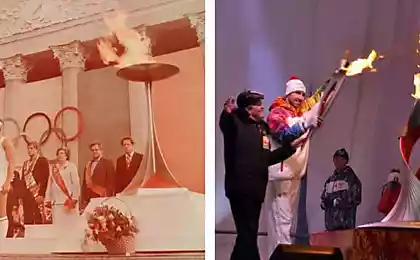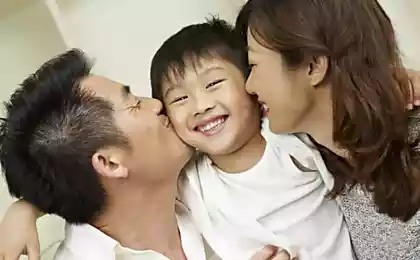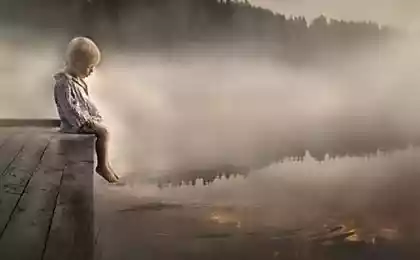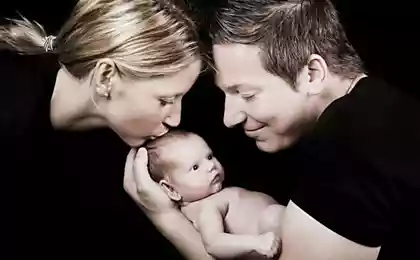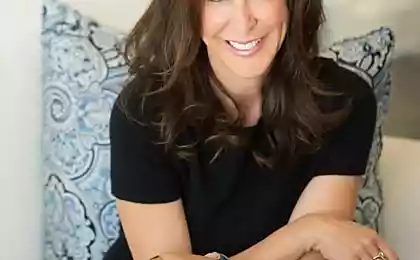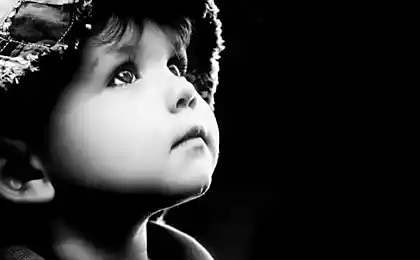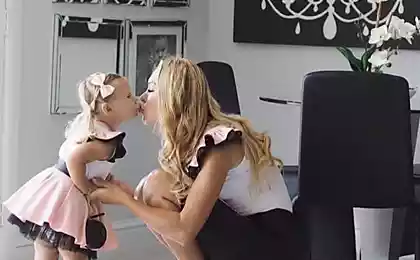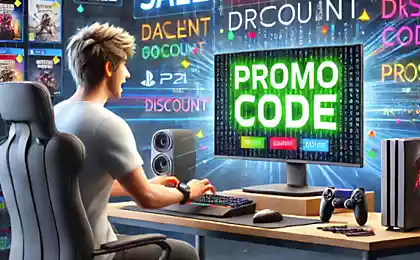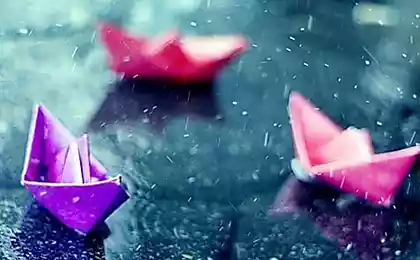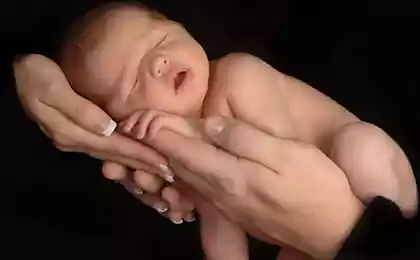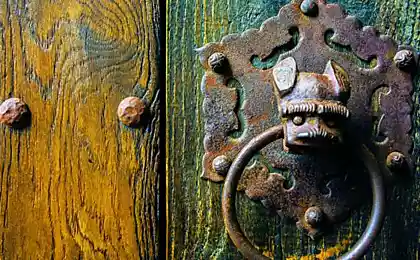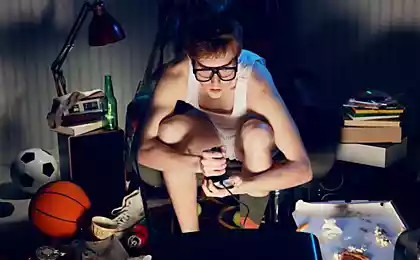331
27 games with children that you can play on the street and at home!
I have a grasshopper in my hand.
This game can be played on the street and at home.
First, the adult talks to the children about grasshoppers. He asks children how he jumps, what he eats, where he lives. Listen carefully to the answers.
Then together with the children imagine that they catch grasshoppers in a forest clearing. Here they jump after them on the grass, here they cover the grasshopper with their palm or Panama. Then gently clamping the fist.
The moderator then asks the children: “What does your grasshopper do?”, “What color is he?”, “Does he have children?” Listen carefully to the children’s answers. And then asks them to let go of the grasshoppers. And for the time being, turn into grasshoppers.
Children start jump like grasshoppers, play an imaginary violin. An adult should allow children to freely express their view of grasshopper life.
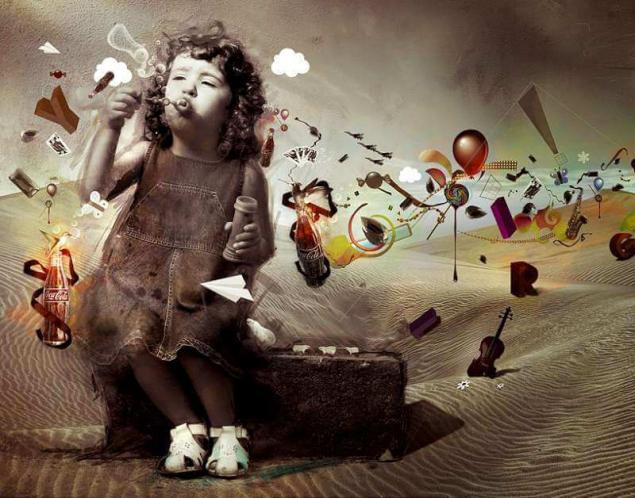
“My years are growing. . . ?
You can start playing the game after reading V. Mayakovsky’s poem “Who to be?” Or talk about who the father, mother, grandparents of the child work. Maybe.Prepare cards with images of people of different professions, And you can just suggestive tips to define a particular profession. For example: "This Uncle Drives," "This Aunt Treats Children," "This Uncle Works with a Computer," etc.
The second option is to ask children what they want to be when they grow up. And what will they do when they become policemen, doctors, teachers, sellers or drivers?
You will have a great time playing this game. The amazing imagination and logic of children will not leave you indifferent.
You're a kitten and I'm an elephant. .
The host invites children to play with animals. The children stand in a circle and lead to the center. He shows children how a cat moves when it wants to catch a mouse, how it washes or jumps for a sunbunny. Then ask the children to repeat the task.
The host asks the children, “Who can show how an elephant moves?” The child is brought to the centre and move elephant, everyone else children repeat behind him. Then the presenter again turns to the children and offers to show the movements of the bear, hare, butterfly, sparrow, etc.
Who lives where?
The host stands in the center, the children around him. The host says, and the children repeat the hand movements after him:
"It's a mink for a fox" - shows a large circle with his hands.
“It’s a bird’s nest,” he puts his hands together like a cup.
"It's a squirrel hollow" - shows a small circle with his hands.
"This is a starling house" - palms together, elbows down.
"Here lives a bee swarm" - clutching his fingers into the castle.
“You’re so big, build your own house.”
Here the adult freezes and waits for the children to paint their house.
Actors
The game develops imagination, imagination, resourcefulness, ingenuity, the ability to reincarnate
A father or mother makes a simple objective action (for example, reading a book) and with the help of facial expressions and gestures shows it to a child who must guess what the parents are doing. If the answer is correct, the players change places.
If the child successfully copes with the task, ask him to guess or show himself a chain of successive events, such as: woke up, got up, washed, had breakfast, etc.
Who is this?
Children sitting or standing in front of the host. He starts with it. Show different movements that mimic the actions of a boy playing balljumping on the rope of a girl, rocking on the arms of a baby mother, cooking dinner at the stove of her grandmother, sweeping the janitor's yard, etc. The children must guess who he is portraying.
At the next stage of the game, the leader must choose one of the children.
The game can be complicated by the fact that children must not only guess who the presenter shows them, but also repeat his actions after him.
Where we were, we will not say, but what we did, we will show.
An adult or child imagines an action and then shows it to other children. At the same time It is impossible to speak, everything should be shown only by actions and gestures. For example, you can show "dinner", "singing", "reading", etc.
You can divide the participants into two groups and arrange a mini-presentation in front of each other, play more action-packed scenes.
We guess animals.
The adult plays an animal and the child tries to guess it. Then you switch roles.
Logical chain
From 4 to 10 children can participate in the game. To start the game, you need to talk to children about different professions: cook, doctor, athletes, etc., whose actions are most easily reproduced in pantomime.
On the playing field, a circle with a radius of 2 m is drawn. There's a lead inside the circle. The other children line up in circles. The leader (to begin with, he must be an adult) makes an action. Like a cook's job. He begins to portray his work without words. For example, mixing soup in a pot.
The rest of the children must guess who he is portraying and join the game, beginning to depict some other action inherent in the work of the cook (cutting vegetables, peeling potatoes, rubbing carrots, pouring soup on plates, etc.).
The presenter all this time carefully watches the actions of other players and tries to understand whether their movements fall under the actions of the hero he intended. If so, he invites the player into the circle. They begin to move together, and already both look out among the players who can be invited to the circle.
The game ends when all players are in a circle.
After the game, everyone together discuss who they portrayed, a logical chain is unwinded: who came up with what to show, who guessed who and led into the circle.
Wizard
A magician is chosen and given a magic wand, with the help of which the magician can turn all other children into different objects or animals.
Touching the child, the “wizard” should say, “Simsala-boom, turning you into a tree” or “Simsala-boom, turning you into a duck,” etc. The transformed child must portray the person the “magician” turned him into.
Know the sound.
Playing to develop attention to sound perception
Required inventory: various toys and objects with which you can produce characteristic sounds: bell, spoon, drum, paper, candy foil, book, coins, plate, etc.
The child sits on the chair with his back to the host. The presenter begins to make noises with various objects: flipping a book, depicting the process of absorbing food, grinding foil, tearing paper, ringing a bell, etc. The child must guess which object the host uses.
If the game is played with a group of children, you can give each person a small incentive prize.
Guessing sounds
The child sits with his back to the adult, who with the help of various objects makes sounds: the noise of water, the boiling of water in the kettle, the work of a microwave oven, the sound of water pouring into a glass, the sound of a knife cutting bread, etc. The child must know the source of the sound.
Fantasy tags
Ordinary ticks can be turned into an exciting game, introducing new rules into it: you can not catch someone who pretends to be something or someone else.
The game strongly encourages the development of creative abilities of the child. You can take a twig and pretend to be a tree, you can pretend to be a frog or a dog, you can pretend to be a bridge or a hemp.
Adults should listen carefully to the children’s explanations when they talk about who they have become.
Continue the story
In this game, you can use any literary works familiar to a child of this age, and gradually introduce him to new fairy tales, stories and poems.
The adult sits next to the children and asks them carefully.listen to a story, which he wants to tell them. After a while. The adult must forget the story and Ask the children to remind him what happened next, or to tell the story to the end.
Lazy bear
To build a den is already very interesting: a blanket is pounced on top of a table or a large cardboard box, a den is arranged inside with the help of pillows.
One of the children depicts a bear hiding in this lair and roaring, snoring or singing loudly. The players are trying poach out"Come out, bear, play with us!" clapped their hands, drummed over an inverted pot, singing and dancing - until the bear comes out.
Then another child goes to the den.
Chamomile
Chamomile is made of paper in advance. On the back of each petal are written funny tasks that they read adult.
Children tear off the petals and begin to perform tasks: walking in a goose, curling, jumping on one leg, singing a song, saying a tongue-twitter, etc.
You can complicate the tasks by asking children to show how the elephant pours water from the trunk, how the cat washes, how the mother prepares dinner, how to squeeze clothes. . .
Guess the subject.
In a large cardboard box or basket, various objects are folded: cubes, pencils, small cars, mosaics, etc. You can use fruits, vegetables, etc. The box is closed with a handkerchief or the child is blindfolded.
The child touches an object and tries to guess what it is.
What happens?
Inventory required: different geometric shapes, voluminous or cut out of paper.
The adult shows the children a figure, such as a cube, and asks: “What is this shape?” Children take turns answering: house, table, stool, loaf of bread, etc.
The second game. The adult asks, “What is wide?” Narrow? Tall? Low? etc.
The game helps the child learn to relate the geometric parameters of objects with the objects themselves.
Edible train
Inventory required: baking molds or clean moulds from the sand set.
Taking a child in the kitchen, the game will help the mother to prepare dinner.
The child can actively use his imagination. Small pieces of bread, cheese, sausage - and here it is, the long-awaited silence, and skillful hands, armed with moulds, create extraordinary sandwiches-cars. You can decorate them to your liking with colorful vegetables, drops of mayonnaise or ketchup.
Drawing by croup or croup
Inventory required: a flat large plate or tray, cereal (for painting with croup - several varieties of cereals).
Pour on the tray with an even thin layer of small cereals. A child can draw.conduct finger croup.
The second option: the child draws, pouring cereals on the tray in thin streams through Fist.
Fantasy
Two leaders are selected. They collect phantoms from all the other children. It can be clothing, jewelry or any other object. The main requirement for a phanta is that it be small and it is possible to accurately identify its owner.
The first presenter takes one phantom from the bag and asks the second presenter, who stands with his back to all the children: "What do this phantom do?". The second host gives the task: to sing, dance, crow, eat a piece of bread, bring candy, sit down five times. The variety of tasks depends on the imagination of children.
Fantique paintings
Develops creative thinking.
The fantasists themselves suggest what it is better to be - part of a dress, a crown of a tree or a tiger's face.
Inventory required: different wrappers from candy, chewing gum, cookies, etc., glue, cardboard, wide scotch, frame.
Together with the child, discuss what you want to portray, maybe suggest him a topic. You draw a sketch with a pencil on a card. Fill it with cut pieces of fantasy and glue them with glue or fasten with tape.
If you have white cardboard, you can paint it with some background color. You can immediately choose a color cardboard that fits your story.
The finished picture can be framed. The child will be proud of the work done.
Merry men.
Inventory required: sheets of paper, markers (pencil or pen).
Number of players: 2 to 6.
Players, each on his own sheet, draw a pre-arranged hero in parts, the drawn part is bent, there is an exchange of sheets, then a continuation is drawn, and so on in several techniques. It is best to divide the picture into three parts: head, torso (with hands), legs.
Then, with a fair amount of fun, we see the result.
Drawers
Inventory required: sheets of paper, markers (pencil or pen).
Draw a picture together. Each participant needs a piece of paper and a pencil. It is better if the players are 4-5, but two are enough.
Each participant conceives a creature. A dog, a turtle, a man, a monster that can be drawn standing. Without peeking into someone else’s leaf, everyone draws the head of “his” being. The sheet is bent so that the head is not visible, but so that the torso can be finished.
Then the participants exchange their sheets (if there are more than two participants - clockwise) and each in the new sheet continues to draw his conceived creature - torso with hands.
Again, the leaf is bent and transmitted in a circle. Participants finish their legs.
Then in turn open all the sheets. In the end, you get very extraordinary creatures.
Optimal option: 4-5 players and the creature is divided respectively into 4-5 parts for drawing (ie, for example, head, torso to the belt with arms, torso from the belt and leg to the knees, legs from the knees).
Association
Forms figurative thinking
The host is selected. He's leaving the room. All other children together with an adult agree on which of the children they wish.
The presenter enters the room and interrogates all the players in turn, asking questions about what a person looks like. Book and cartoon characters, flowers and trees, animals and paintings can be used.
The task of the presenter is to guess who was given. The task of the participants is to respond with the first association that comes to mind.
In the next round, the one who was made becomes the leader.
Adults, if children play the game for the first time, can actively help children.
Paper doll house
Making a house for a paper doll is a very exciting activity. This is where you can apply all your imagination!
You make a house out of a thick notebook. You cut a door on the cover. Every page is a room.
Bedroom: Draw a bed, make a slot along it, in which you can put a doll. Draw a cabinet with opening doors, a mat on the floor, etc.
Kitchen: tables and hinged cabinets are made on the same principle as “volume” books, in lockers horizontal slots are shelves where plates, pans carved from colored paper are nested.
In the bathroom, you sew a curtain of cellophane on a string, in the lockers you draw bubbles and tubes.
Letter to the future
Inventory required: A glass bottle with a swirling cork, a piece of paper, a pen.
An adult, along with a child, writes a “letter to the future”, for example, for a younger brother, a sister. He can write a letter for himself, but he is 3 to 4 years older.
The letter is put in a bottle and buried. Then a map is drawn indicating the location of the buried message.
A very exciting occupation, which combines mathematics (calculate the right number of steps for the correct route to the message on the map), writing skills, actively using imagination.
P.S. And remember, just changing our consumption – together we change the world!
Join us on Facebook, VKontakte, Odnoklassniki
Source: vk.com/roditeli_i?w=wall-5608057_1205996
This game can be played on the street and at home.
First, the adult talks to the children about grasshoppers. He asks children how he jumps, what he eats, where he lives. Listen carefully to the answers.
Then together with the children imagine that they catch grasshoppers in a forest clearing. Here they jump after them on the grass, here they cover the grasshopper with their palm or Panama. Then gently clamping the fist.
The moderator then asks the children: “What does your grasshopper do?”, “What color is he?”, “Does he have children?” Listen carefully to the children’s answers. And then asks them to let go of the grasshoppers. And for the time being, turn into grasshoppers.
Children start jump like grasshoppers, play an imaginary violin. An adult should allow children to freely express their view of grasshopper life.

“My years are growing. . . ?
You can start playing the game after reading V. Mayakovsky’s poem “Who to be?” Or talk about who the father, mother, grandparents of the child work. Maybe.Prepare cards with images of people of different professions, And you can just suggestive tips to define a particular profession. For example: "This Uncle Drives," "This Aunt Treats Children," "This Uncle Works with a Computer," etc.
The second option is to ask children what they want to be when they grow up. And what will they do when they become policemen, doctors, teachers, sellers or drivers?
You will have a great time playing this game. The amazing imagination and logic of children will not leave you indifferent.
You're a kitten and I'm an elephant. .
The host invites children to play with animals. The children stand in a circle and lead to the center. He shows children how a cat moves when it wants to catch a mouse, how it washes or jumps for a sunbunny. Then ask the children to repeat the task.
The host asks the children, “Who can show how an elephant moves?” The child is brought to the centre and move elephant, everyone else children repeat behind him. Then the presenter again turns to the children and offers to show the movements of the bear, hare, butterfly, sparrow, etc.
Who lives where?
The host stands in the center, the children around him. The host says, and the children repeat the hand movements after him:
"It's a mink for a fox" - shows a large circle with his hands.
“It’s a bird’s nest,” he puts his hands together like a cup.
"It's a squirrel hollow" - shows a small circle with his hands.
"This is a starling house" - palms together, elbows down.
"Here lives a bee swarm" - clutching his fingers into the castle.
“You’re so big, build your own house.”
Here the adult freezes and waits for the children to paint their house.
Actors
The game develops imagination, imagination, resourcefulness, ingenuity, the ability to reincarnate
A father or mother makes a simple objective action (for example, reading a book) and with the help of facial expressions and gestures shows it to a child who must guess what the parents are doing. If the answer is correct, the players change places.
If the child successfully copes with the task, ask him to guess or show himself a chain of successive events, such as: woke up, got up, washed, had breakfast, etc.
Who is this?
Children sitting or standing in front of the host. He starts with it. Show different movements that mimic the actions of a boy playing balljumping on the rope of a girl, rocking on the arms of a baby mother, cooking dinner at the stove of her grandmother, sweeping the janitor's yard, etc. The children must guess who he is portraying.
At the next stage of the game, the leader must choose one of the children.
The game can be complicated by the fact that children must not only guess who the presenter shows them, but also repeat his actions after him.
Where we were, we will not say, but what we did, we will show.
An adult or child imagines an action and then shows it to other children. At the same time It is impossible to speak, everything should be shown only by actions and gestures. For example, you can show "dinner", "singing", "reading", etc.
You can divide the participants into two groups and arrange a mini-presentation in front of each other, play more action-packed scenes.
We guess animals.
The adult plays an animal and the child tries to guess it. Then you switch roles.
Logical chain
From 4 to 10 children can participate in the game. To start the game, you need to talk to children about different professions: cook, doctor, athletes, etc., whose actions are most easily reproduced in pantomime.
On the playing field, a circle with a radius of 2 m is drawn. There's a lead inside the circle. The other children line up in circles. The leader (to begin with, he must be an adult) makes an action. Like a cook's job. He begins to portray his work without words. For example, mixing soup in a pot.
The rest of the children must guess who he is portraying and join the game, beginning to depict some other action inherent in the work of the cook (cutting vegetables, peeling potatoes, rubbing carrots, pouring soup on plates, etc.).
The presenter all this time carefully watches the actions of other players and tries to understand whether their movements fall under the actions of the hero he intended. If so, he invites the player into the circle. They begin to move together, and already both look out among the players who can be invited to the circle.
The game ends when all players are in a circle.
After the game, everyone together discuss who they portrayed, a logical chain is unwinded: who came up with what to show, who guessed who and led into the circle.
Wizard
A magician is chosen and given a magic wand, with the help of which the magician can turn all other children into different objects or animals.
Touching the child, the “wizard” should say, “Simsala-boom, turning you into a tree” or “Simsala-boom, turning you into a duck,” etc. The transformed child must portray the person the “magician” turned him into.
Know the sound.
Playing to develop attention to sound perception
Required inventory: various toys and objects with which you can produce characteristic sounds: bell, spoon, drum, paper, candy foil, book, coins, plate, etc.
The child sits on the chair with his back to the host. The presenter begins to make noises with various objects: flipping a book, depicting the process of absorbing food, grinding foil, tearing paper, ringing a bell, etc. The child must guess which object the host uses.
If the game is played with a group of children, you can give each person a small incentive prize.
Guessing sounds
The child sits with his back to the adult, who with the help of various objects makes sounds: the noise of water, the boiling of water in the kettle, the work of a microwave oven, the sound of water pouring into a glass, the sound of a knife cutting bread, etc. The child must know the source of the sound.
Fantasy tags
Ordinary ticks can be turned into an exciting game, introducing new rules into it: you can not catch someone who pretends to be something or someone else.
The game strongly encourages the development of creative abilities of the child. You can take a twig and pretend to be a tree, you can pretend to be a frog or a dog, you can pretend to be a bridge or a hemp.
Adults should listen carefully to the children’s explanations when they talk about who they have become.
Continue the story
In this game, you can use any literary works familiar to a child of this age, and gradually introduce him to new fairy tales, stories and poems.
The adult sits next to the children and asks them carefully.listen to a story, which he wants to tell them. After a while. The adult must forget the story and Ask the children to remind him what happened next, or to tell the story to the end.
Lazy bear
To build a den is already very interesting: a blanket is pounced on top of a table or a large cardboard box, a den is arranged inside with the help of pillows.
One of the children depicts a bear hiding in this lair and roaring, snoring or singing loudly. The players are trying poach out"Come out, bear, play with us!" clapped their hands, drummed over an inverted pot, singing and dancing - until the bear comes out.
Then another child goes to the den.
Chamomile
Chamomile is made of paper in advance. On the back of each petal are written funny tasks that they read adult.
Children tear off the petals and begin to perform tasks: walking in a goose, curling, jumping on one leg, singing a song, saying a tongue-twitter, etc.
You can complicate the tasks by asking children to show how the elephant pours water from the trunk, how the cat washes, how the mother prepares dinner, how to squeeze clothes. . .
Guess the subject.
In a large cardboard box or basket, various objects are folded: cubes, pencils, small cars, mosaics, etc. You can use fruits, vegetables, etc. The box is closed with a handkerchief or the child is blindfolded.
The child touches an object and tries to guess what it is.
What happens?
Inventory required: different geometric shapes, voluminous or cut out of paper.
The adult shows the children a figure, such as a cube, and asks: “What is this shape?” Children take turns answering: house, table, stool, loaf of bread, etc.
The second game. The adult asks, “What is wide?” Narrow? Tall? Low? etc.
The game helps the child learn to relate the geometric parameters of objects with the objects themselves.
Edible train
Inventory required: baking molds or clean moulds from the sand set.
Taking a child in the kitchen, the game will help the mother to prepare dinner.
The child can actively use his imagination. Small pieces of bread, cheese, sausage - and here it is, the long-awaited silence, and skillful hands, armed with moulds, create extraordinary sandwiches-cars. You can decorate them to your liking with colorful vegetables, drops of mayonnaise or ketchup.
Drawing by croup or croup
Inventory required: a flat large plate or tray, cereal (for painting with croup - several varieties of cereals).
Pour on the tray with an even thin layer of small cereals. A child can draw.conduct finger croup.
The second option: the child draws, pouring cereals on the tray in thin streams through Fist.
Fantasy
Two leaders are selected. They collect phantoms from all the other children. It can be clothing, jewelry or any other object. The main requirement for a phanta is that it be small and it is possible to accurately identify its owner.
The first presenter takes one phantom from the bag and asks the second presenter, who stands with his back to all the children: "What do this phantom do?". The second host gives the task: to sing, dance, crow, eat a piece of bread, bring candy, sit down five times. The variety of tasks depends on the imagination of children.
Fantique paintings
Develops creative thinking.
The fantasists themselves suggest what it is better to be - part of a dress, a crown of a tree or a tiger's face.
Inventory required: different wrappers from candy, chewing gum, cookies, etc., glue, cardboard, wide scotch, frame.
Together with the child, discuss what you want to portray, maybe suggest him a topic. You draw a sketch with a pencil on a card. Fill it with cut pieces of fantasy and glue them with glue or fasten with tape.
If you have white cardboard, you can paint it with some background color. You can immediately choose a color cardboard that fits your story.
The finished picture can be framed. The child will be proud of the work done.
Merry men.
Inventory required: sheets of paper, markers (pencil or pen).
Number of players: 2 to 6.
Players, each on his own sheet, draw a pre-arranged hero in parts, the drawn part is bent, there is an exchange of sheets, then a continuation is drawn, and so on in several techniques. It is best to divide the picture into three parts: head, torso (with hands), legs.
Then, with a fair amount of fun, we see the result.
Drawers
Inventory required: sheets of paper, markers (pencil or pen).
Draw a picture together. Each participant needs a piece of paper and a pencil. It is better if the players are 4-5, but two are enough.
Each participant conceives a creature. A dog, a turtle, a man, a monster that can be drawn standing. Without peeking into someone else’s leaf, everyone draws the head of “his” being. The sheet is bent so that the head is not visible, but so that the torso can be finished.
Then the participants exchange their sheets (if there are more than two participants - clockwise) and each in the new sheet continues to draw his conceived creature - torso with hands.
Again, the leaf is bent and transmitted in a circle. Participants finish their legs.
Then in turn open all the sheets. In the end, you get very extraordinary creatures.
Optimal option: 4-5 players and the creature is divided respectively into 4-5 parts for drawing (ie, for example, head, torso to the belt with arms, torso from the belt and leg to the knees, legs from the knees).
Association
Forms figurative thinking
The host is selected. He's leaving the room. All other children together with an adult agree on which of the children they wish.
The presenter enters the room and interrogates all the players in turn, asking questions about what a person looks like. Book and cartoon characters, flowers and trees, animals and paintings can be used.
The task of the presenter is to guess who was given. The task of the participants is to respond with the first association that comes to mind.
In the next round, the one who was made becomes the leader.
Adults, if children play the game for the first time, can actively help children.
Paper doll house
Making a house for a paper doll is a very exciting activity. This is where you can apply all your imagination!
You make a house out of a thick notebook. You cut a door on the cover. Every page is a room.
Bedroom: Draw a bed, make a slot along it, in which you can put a doll. Draw a cabinet with opening doors, a mat on the floor, etc.
Kitchen: tables and hinged cabinets are made on the same principle as “volume” books, in lockers horizontal slots are shelves where plates, pans carved from colored paper are nested.
In the bathroom, you sew a curtain of cellophane on a string, in the lockers you draw bubbles and tubes.
Letter to the future
Inventory required: A glass bottle with a swirling cork, a piece of paper, a pen.
An adult, along with a child, writes a “letter to the future”, for example, for a younger brother, a sister. He can write a letter for himself, but he is 3 to 4 years older.
The letter is put in a bottle and buried. Then a map is drawn indicating the location of the buried message.
A very exciting occupation, which combines mathematics (calculate the right number of steps for the correct route to the message on the map), writing skills, actively using imagination.
P.S. And remember, just changing our consumption – together we change the world!
Join us on Facebook, VKontakte, Odnoklassniki
Source: vk.com/roditeli_i?w=wall-5608057_1205996
